Asiatic Travels #11: Crossing Shingo-la into the Valley of Zanskar
This continues where the other entry left off, in Himachal Pradesh on my way to Shingo-la and the valley of Zanskar. I'll be posting these regularly until the entire thing is transcribed with photos and videos. In the first year of my travels I used a cheap camera, but you can find information about this trek in many guidebooks for the area.
--
July 26, 2014
I wake up to find dried blood in my nose. The headache is gone, but I tell my partners that I’ll remain in Chumik (4450 meters) for another day to acclimate. Nina assures me that she had blood in her nose at the start of the trek as well. In the end I decide to continue to Shingo-la. We will ascend to 5100 meters today and then descend into the valley of Zanskar somewhere below 4400 meters.
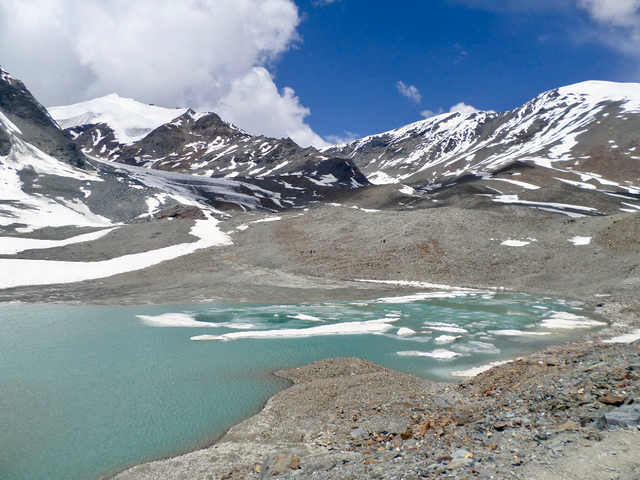
Philip and I take another dose of cocoa, Sergey eats a couple of cashews, and we set off. The first couple of kilometers are fairly steep, then the land levels out. We are progressively entering into a moist alpine desert. A mountain falls steeply to the right, covered in the rubble of a million-year avalanche, until sinking into a raging river. On the opposite end is a wide mountain range, its peaks are trimmed with huge depressions full of snow, and below that I see great bodies of snow and ice that sink into and over the river. At places the river pounds through and beneath the glacial landmass to form impressive moraines. I cannot easily distinguish where the glaciers begin and the mountain ends; slate and snow covers everything below 6000 meters.
We pass through enormous snowdrifts, carved out by donkeys and previous travelers. I slip often — my shoes have lost most of their traction. Streams of water flow over and beside the path, forming a myriad of patterns. The earth is mostly barren rock with occasional flowering plants and lichen. We pass over a steep hill for a couple hundred meters. It’s a challenging climb full of hidden switchbacks, I enter a meditative state and imagine being the mountain. Again I sense dragons all around me.
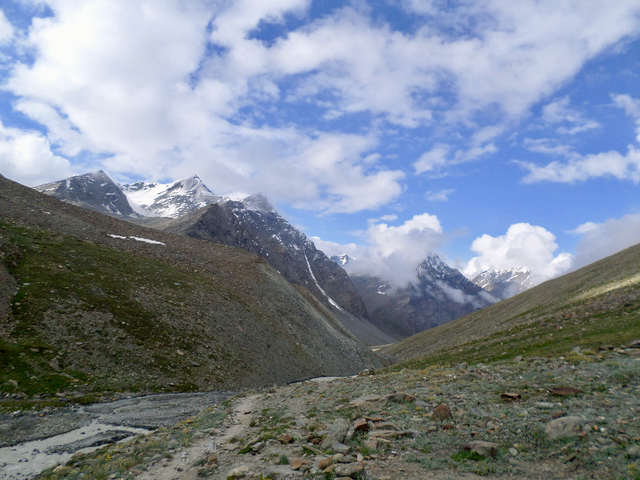



It takes me a while to catch up with Philip. We can’t see Sergey behind us, so we wait until we can spot him before moving on. The next section of the trek follows a very narrow path along a mountainside. We have to wait for lines of donkeys to pass. The river thunders below. There is a huge depression in the landscape, a meeting point between several snow-peaked mountains. Beyond there is a compacted snowdrift that completely covers our path. Philip has sturdier boots and goes before us. I follow in his compressed footsteps, often slipping and catching myself with my pole. We make it across, refill our bottles in the fresh glacial stream and move on for a while.
We pass over two glaciers and climb up for a bit, and at the summit of that hill is a deep blue, glacial lake with shards of bright white ice idling on the surface. The lake lays low in the mountain and above it was Shingo-la. Buddhist prayer flags flutter over the pass.
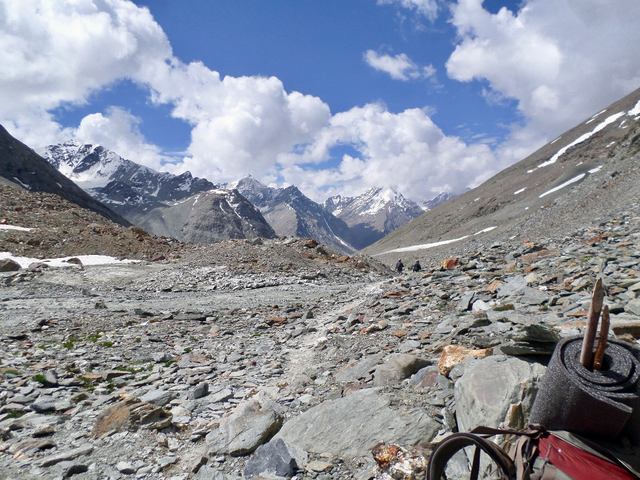
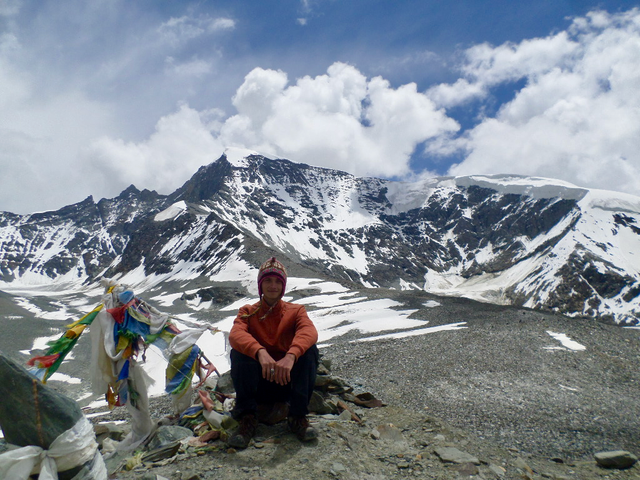
I descend the hill and walk around the lake. Philip has already been at the pass for hours — Sergey and I have taken it slow due to my sickness and his fasting. I meet some trekkers who tell me that we’re three hours from the next campground, the Lakong base camp. They also send a message from Philip at the top — hurry up. I tell them he can get over it and continue to join him at the summit.
Shingo-la is a beautiful place of great power. Clouds began to fill the sky as we waited for Sergey to join us, and before long the rain came. We take some photos and rest, I find a place by a stone wall to the left of the pass, where dozens of prayer flags were strewn. A small temple dedicated to the Dalai Llama is hidden in the wall. Here the wind is partially broken by the rock wall, so I sit and meditate. The rain begins to fall steadily and I think of dragons.
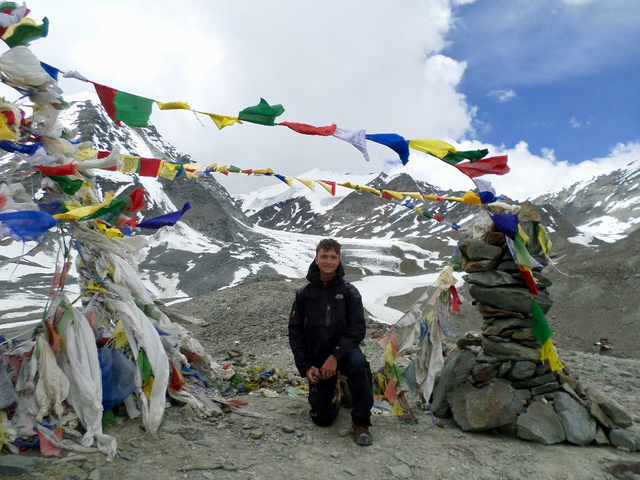
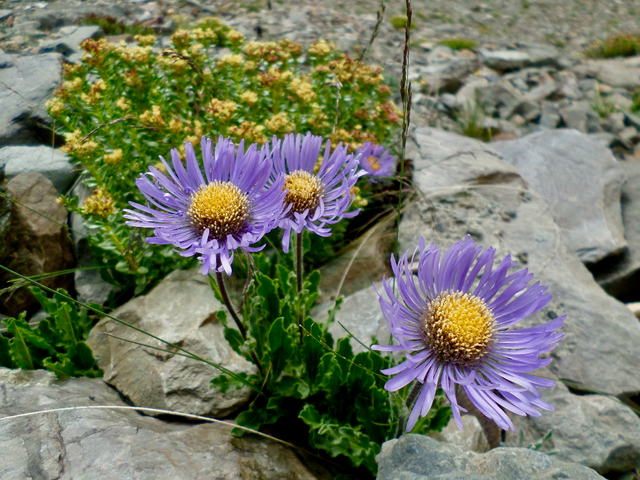
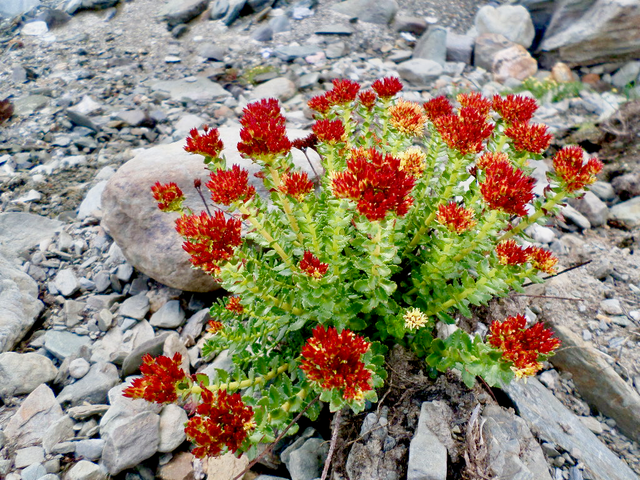
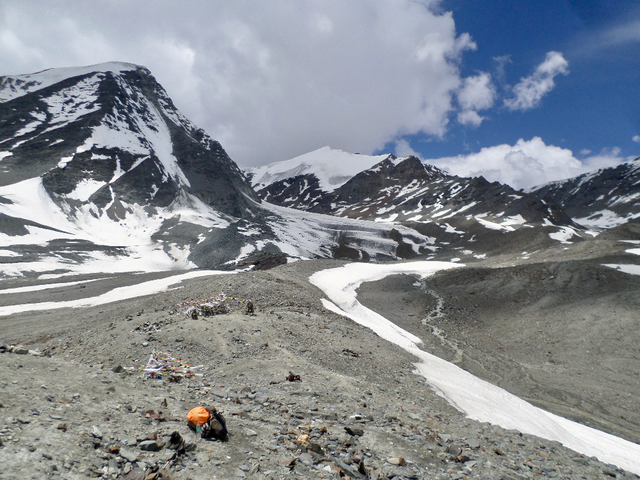
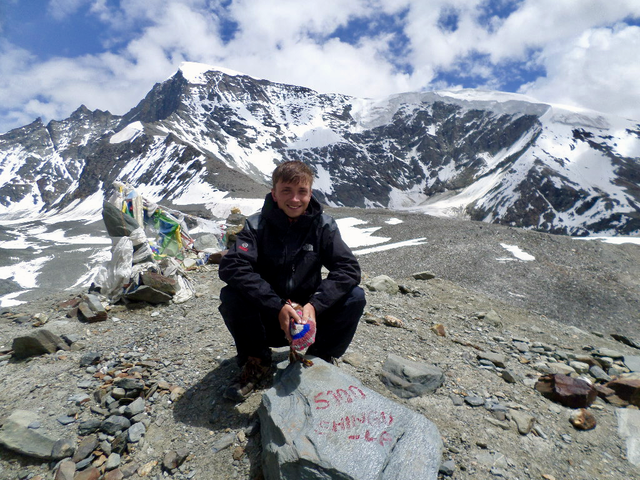
Sergey arrives and rests for a while before we move on, down into the sublime valley below. Rock faces tower overhead. We reach the river below some hours later and decide to cross. The river is deep and we cannot see the rocks below. I’m soaked to my knees by the time I reach the other side. Just over the ricer is a small camp. I rest for a moment while Philip gathers directions, then we move on.
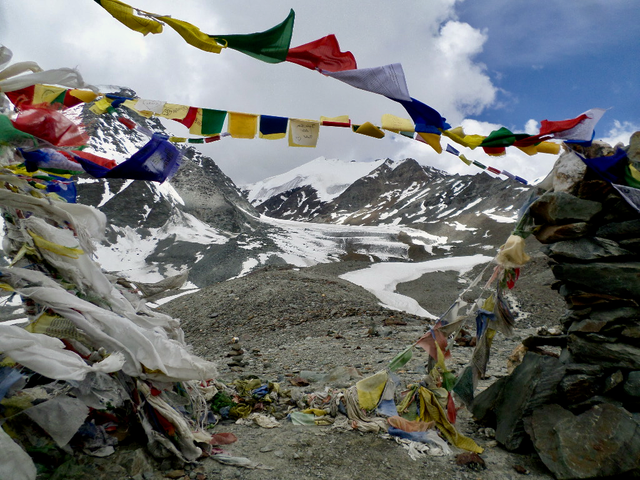
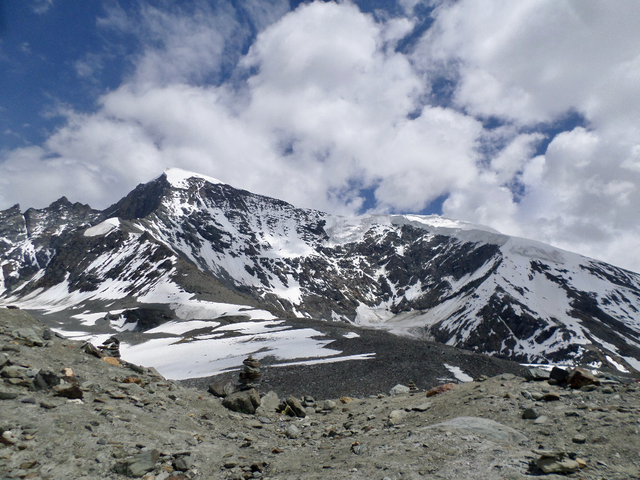
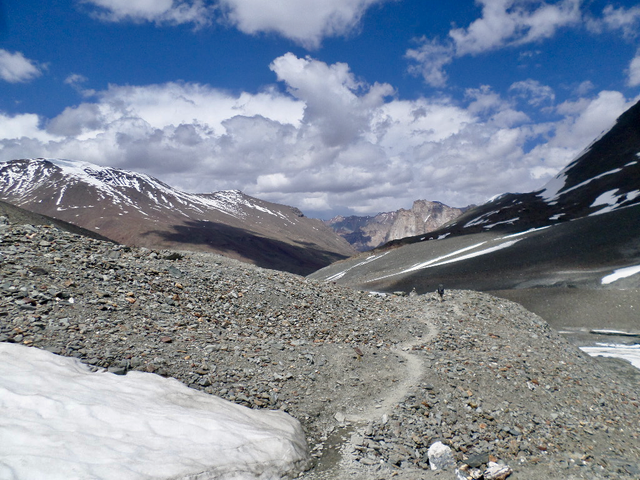

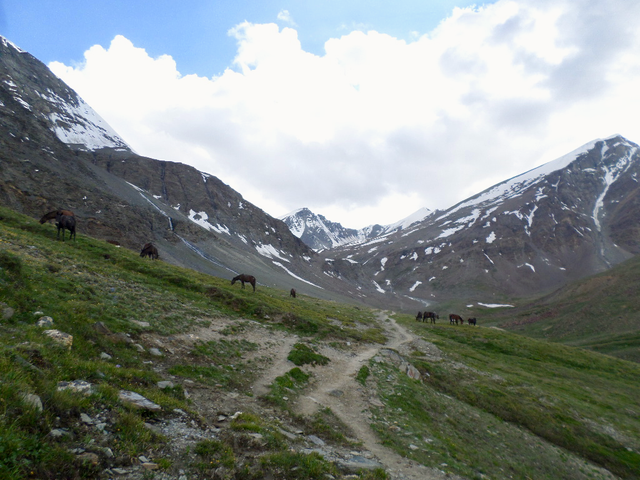
An hour or more later, we reach the hillside that overlooks the great Zanskar valley. It reminds me of the American Southwest, of buttes and the Grand Canyon. Two titans of orange-red rock tower over either side of the valley. The range stretches and bends into the distance. Shadows and rays of sunlight dance in turn over the valley, producing a constantly transforming display of colors. The river winds down the valley until disappearing over the slopes below. Directly behind us was the source of the river, flowing down over the hills between snow-capped mountains.
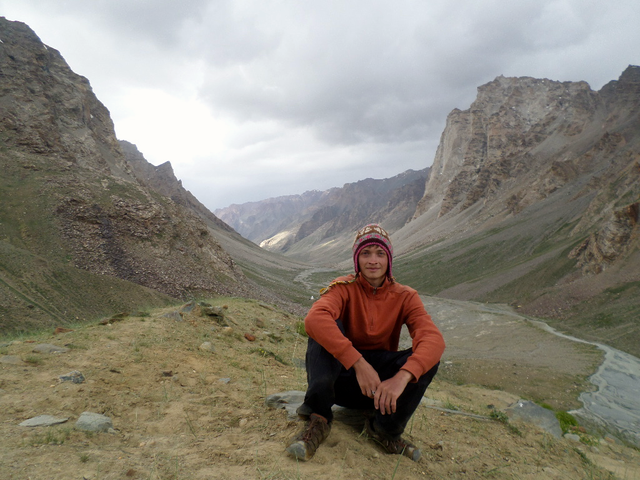
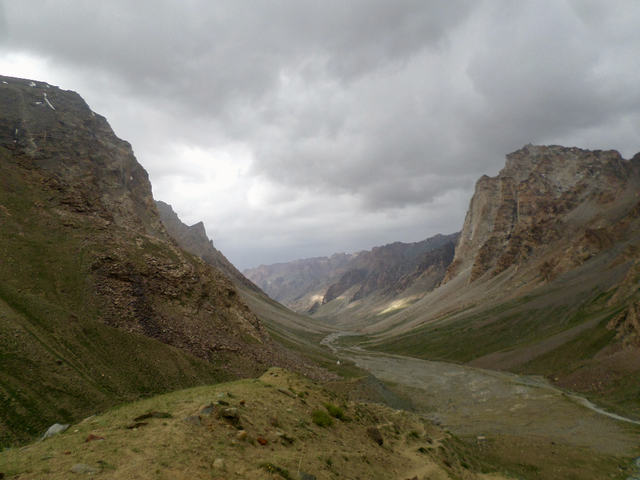
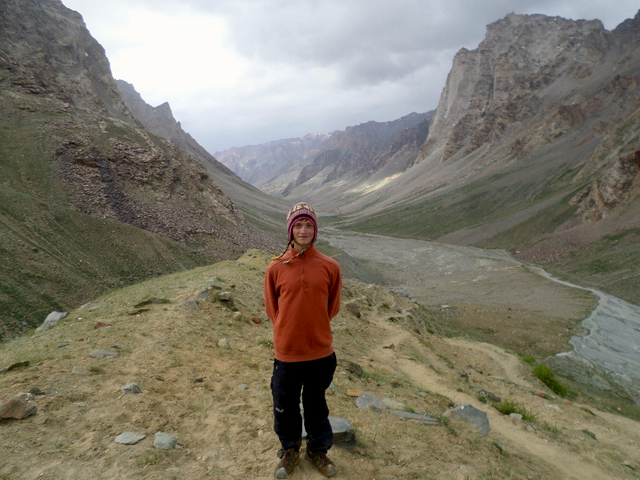
We descend over the dusty hillside and make our way to the river below. It begins to rain again, harder this time. We take shelter in a shepherd’s hut — a simple structure made of stones with a rod of cow dung and a barren dirt floor. The air inside smells like rain, dust and burnt plastic. I watch the rain as the river level swells. We wait for Sergey, but when he arrives he powers right by us. We follow him to the river. There’s a bridge to the other side, but we have to enter the river to get to it. My backpack makes it challenging to balance as I step across, again soaking my pants and boots. I manage to secure my camera while halfway across the river, thankful that there is no algae on the boulders at that altitude. By the time we reach the stone bridge to Lakung, I was feeling irate. We reach another camp of stones and manure. I cool my emotions and get a sense of how remote we are out here, even considering all of the tourists and horsemen. There was just one teahouse, run by one strange and stinky old monk. There was also a trekking guide at camp whose company was pretty undesirable. I meet an Israeli fella there and we find some common ground. He shares his tent with me, Philip sleeps in the tea house. The camp was hard to breathe in with all the smoke of smoldering manure. I change clothes in the store room and have a tea.
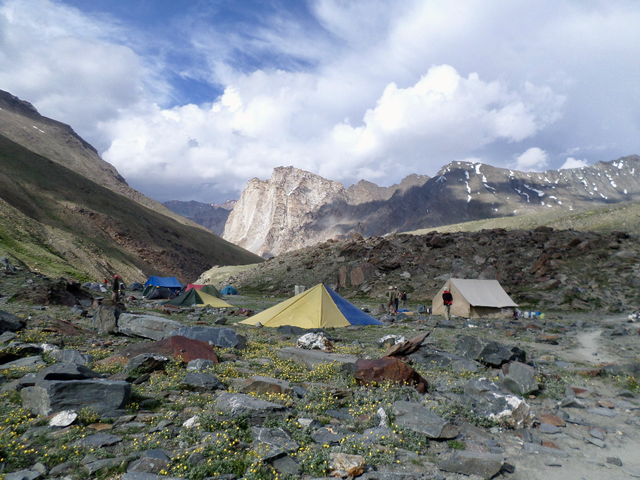
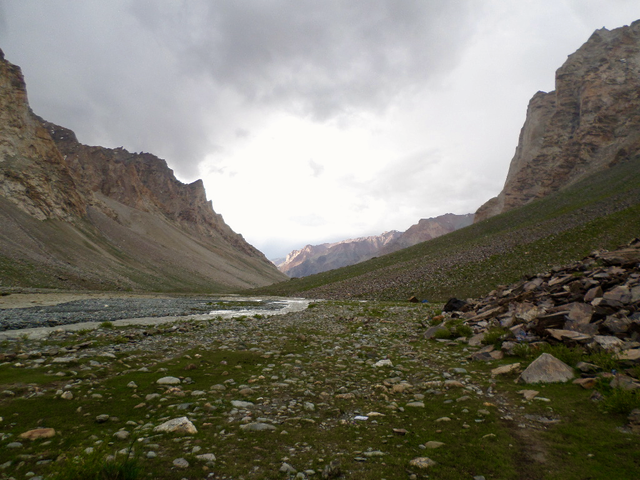
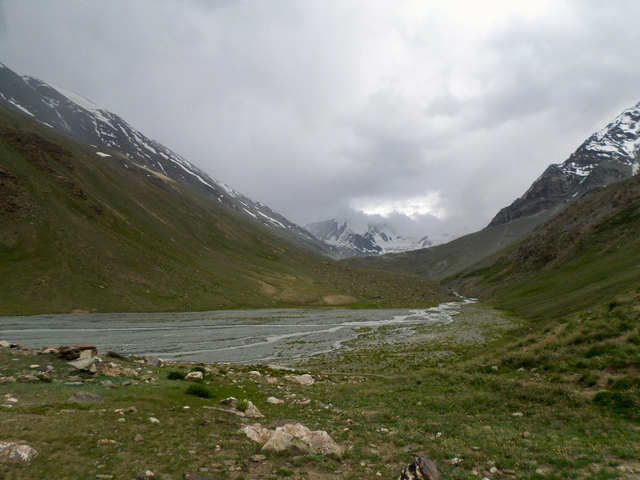
The Israeli and I have a long and expansive conversation beneath the cloudy night sky. We talk about how treks like these tend to draw your imperfections to the surface, and how we handle them. We never exchanged contact information, I only remember his name was Jil. He was going the other way, towards Shingo-la. He’s going to complete the ascent on LSD, to commemorate his dead friend who had wanted to do the same. I wonder if he’ll meet the dragon.
--
Thank you all for reading, I hope that you found value here.
People often ask me how I manage to fund all of these adventures. I use three vehicles to keep this thing rolling. One is cryptocurrency donations or upvotes on Steemit. Find @sariun and me talking about magic internet money here.
During my travels, I witnessed so much injustice. Upon returning home, I found a way to fund my travels while at the same time protect other people. Find out more here and here.
If you're interested in making good money teaching kids English from your computer, even if you're traveling the world, check this out.
Here's to the new economy!
See more @rotiwokeman